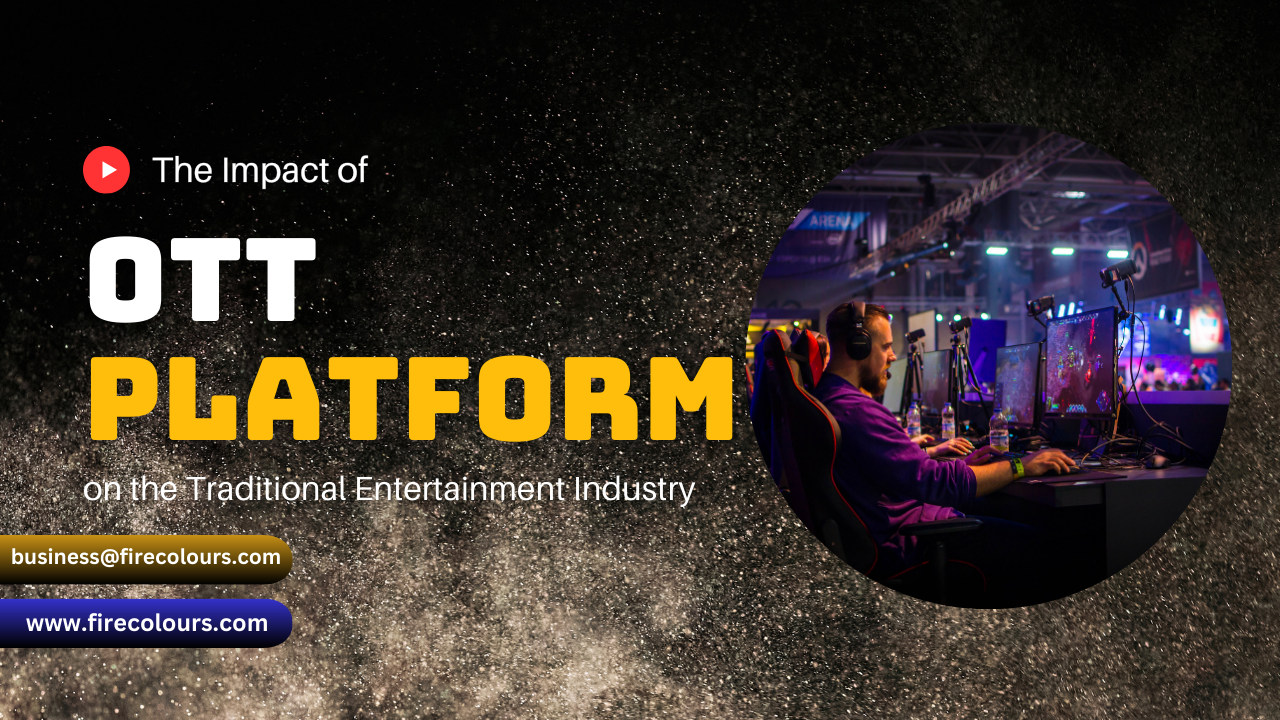In recent years, the entertainment landscape has undergone a significant transformation with the rise of Over-The-Top (OTT) platforms. These digital streaming services have revolutionized the way we consume media, challenging traditional models and influencing the entire entertainment industry. In this article, we will explore how OTT platforms have influenced the traditional entertainment industry and examine the various ways in which these platforms have reshaped the dynamics of content creation, distribution, and consumption.
Disruption of Traditional Distribution Channels:
OTT platforms have disrupted the traditional distribution channels that once dominated the entertainment industry. Previously, content creators relied heavily on television networks, movie studios, and cable providers to reach their audiences. However, with the advent of OTT platforms like Netflix, Amazon Prime Video, and Hulu, content creators now have direct access to a global audience, eliminating the need for intermediaries. This has democratized the entertainment industry, enabling independent filmmakers, artists, and creators to showcase their work to a wide range of viewers without the constraints of traditional gatekeepers.
Shift in Audience Viewing Habits:
The way viewers consume material has been altered by OTT services. Traditional appointment viewing has given way to on-demand streaming, allowing viewers to watch their favorite shows and movies at their convenience. Binge-watching, made popular by platforms like Netflix, has become a cultural phenomenon, changing the way narratives are structured and creating new opportunities for storytelling. As a result, traditional television networks and movie theaters have had to adapt their programming and release strategies to compete with the convenience and flexibility offered by OTT platforms.
Expansion of Content Diversity:
One of the most significant impacts of OTT platforms on the traditional entertainment industry is the expansion of content diversity. With a vast array of genres, languages, and formats, OTT platforms cater to niche audiences that were previously underserved by traditional media. This has led to an explosion of original content, including international productions, documentaries, and niche genres. By providing a platform for diverse voices and stories, OTT platforms have challenged the dominance of mainstream media and empowered underrepresented communities.
Disintermediation of Content Creation:
OTT platforms have also disrupted the traditional model of content creation. In the past, studios and networks controlled the production and distribution of content, often limiting the creative freedom of artists and filmmakers. With OTT platforms, content creators have gained more control and creative autonomy, as these platforms are more willing to take risks and invest in unconventional storytelling. This has encouraged innovation and allowed for the emergence of new talent, as creators are no longer solely reliant on traditional gatekeepers to greenlight their projects.
Monetization and Revenue Streams:
While OTT platforms have offered new opportunities for content creators, they have also posed challenges to traditional revenue streams. Advertising-supported models have shifted towards subscription-based services, requiring audiences to pay for access to premium content. This has impacted traditional broadcasters and cable providers, who now face increased competition and the need to adapt their revenue models. Additionally, the proliferation of OTT platforms has fragmented the market, making it more challenging for individual platforms to generate substantial profits and forcing them to invest heavily in original content to attract and retain subscribers.
Conclusion:
OTT platforms have had a profound impact on the traditional entertainment industry, transforming the way content is created, distributed, and consumed. These platforms have disrupted traditional distribution channels, shifted audience viewing habits, expanded content diversity, empowered content creators, and changed revenue models. As the industry continues to e volve, it is essential for traditional players to adapt and embrace the opportunities presented by OTT platforms, while also addressing the challenges they bring. The future of entertainment lies in the delicate balance between traditional and digital platforms, as both continue to shape and influence the industry. Now-a-days who has a thought to succeed in this media industry, your must-have own OTT platform. So that you don't get confused about where you start to build your own OTT Platform. Here our expertise team is there to help you. Fire Colours is a leading OTT App Development Company with more than 5 years of experience. Our team of professionals will give you end-to-end results that your business needs.
volve, it is essential for traditional players to adapt and embrace the opportunities presented by OTT platforms, while also addressing the challenges they bring. The future of entertainment lies in the delicate balance between traditional and digital platforms, as both continue to shape and influence the industry. Now-a-days who has a thought to succeed in this media industry, your must-have own OTT platform. So that you don't get confused about where you start to build your own OTT Platform. Here our expertise team is there to help you. Fire Colours is a leading OTT App Development Company with more than 5 years of experience. Our team of professionals will give you end-to-end results that your business needs.
